Growing out a pixie cut can feel like a slow process filled with weird hair days and in-between stages. Some days it sticks out. Other days it just won’t sit right. But this phase doesn’t have to be a style disaster.
With the right approach, it can actually be a fun and creative part of your hair journey.
Stylists know that it’s not just about letting your hair grow—it’s about shaping it as it goes. A small trim here, a bit of texture there, and suddenly it looks like a brand-new style.
You don’t need to hide under hats or feel stuck in a rut. Styling tools, simple tricks, and the right accessories can help you feel confident at every step.
Try playing with volume, parting your hair differently, or adding a wave for movement. Even a cute clip or headband can make a big difference.
Growing out a pixie takes time, yes—but it doesn’t mean sacrificing your style. Each stage can be flattering, fun, and full of personality when you work with your hair instead of fighting it.
So instead of dreading the in-between, lean into it. With a few smart tips, you’ll get through it feeling polished—and maybe even loving every stage along the way.
Table of Contents
Start With Regular Maintenance Trims

Trimming your hair while trying to grow it out might sound totally backward—but when it comes to growing out a pixie cut, regular trims are actually a must.
These small, strategic cuts help maintain the shape of your style and prevent that awkward, uneven look that can happen during the in-between stages.
Booking a trim every 6 to 8 weeks can make a big difference in how your hair grows out. It keeps your look fresh, polished, and intentional—rather than letting it turn into a shapeless mess.
At each appointment, your stylist should focus on specific areas. The back of the neck often grows faster and can easily turn into a mullet-like shape if left alone. Keeping that area neat helps the whole cut stay balanced.
Meanwhile, the top and crown areas can be left to grow with minimal trimming. That’s where you want the most length as you move toward a longer style.
Your stylist might also add a little texturizing to blend the lengths and reduce bulk. This helps everything grow together more smoothly without weird bumps or heavy patches.
And there’s another bonus: regular trims keep split ends in check. That means less breakage and healthier hair overall, which can actually speed up the growing process in the long run.
So yes, trimming your hair is part of growing it out—just done with purpose and a plan.
Master Strategic Bobby Pin Placement
Bobby pins become your best friend during those awkward grow-out stages of a pixie cut.
As your hair starts growing at different speeds, it’s easy for certain sections to stick out or fall flat. That’s where a little strategic pinning can make all the difference.
The trick is to make it look intentional—not like you’re just trying to keep your hair out of your face.
Choose bobby pins that blend with your hair color for a clean, polished finish. Then, get creative with your placement.
If the back of your neck is getting too long and starting to flip out, try crossing two bobby pins in an X shape to keep it neat.
For pieces around your ears, slide pins in at a diagonal angle and tuck the ends underneath longer strands. This hides them while keeping everything in place.
Bangs growing out? Create a soft twist at the side of your head and secure it with a single pin. It’s simple, stylish, and keeps those wispy strands under control.
Want your pins to really stay put? Use the wavy side down against your scalp for a stronger grip. You can even spray them with hairspray before placing them—they’ll hold better and last longer.
Layer a few pins in the same direction if you need more support, especially on thicker or stubborn sections.
With just a handful of bobby pins and a little technique, you can make every stage of your pixie grow-out feel a whole lot more put-together.
Experiment With Hair Accessories

Hair accessories are a lifesaver when growing out a pixie cut.
Flat clips help manage shorter pieces early on, while wider bands come in handy as your hair gets longer. Headbands are great for taming awkward sections—start with thin elastic ones, then switch to wider styles as you go.
Use barrettes and decorative pins to keep flyaway layers in check while adding a playful detail to your look. On dressier days, a scarf or bandana is a stylish way to disguise uneven growth.
Go for soft, non-slip accessories to protect your hair, and switch up where you place them to avoid putting pressure on the same spot. A few smart choices can keep your style looking fresh at every stage.
Embrace Texturizing Products
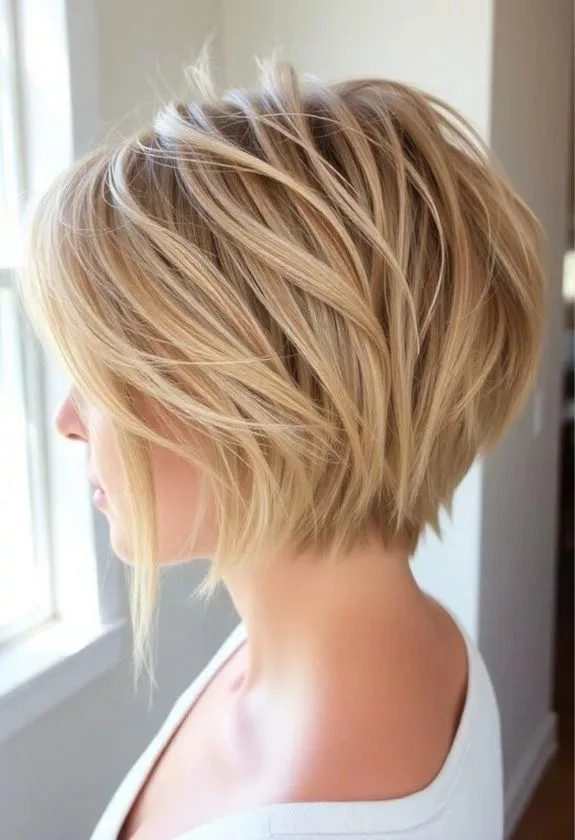
Texturizing products can be a total game-changer when you’re growing out a pixie cut. They help give your hair some shape and movement, especially when it’s in that awkward phase and not sure what it wants to do.
If your hair’s on the finer side, go for a light spray that won’t weigh it down. Thicker hair? A bit of pomade or cream can help smooth things out and add some control.
Sea salt sprays are great for creating soft waves and that effortless, lived-in texture. And if your roots are feeling a little flat or oily, a texture powder can add lift and make everything feel fresher.
You don’t need a ton—start small. Just work it in with your fingers, scrunch a bit, and let your hair do its thing. It’s all about creating a look that feels natural but still put together.
Also Read: 23 Undercut Pixie Cuts to Try in 2025
Tame the Awkward Neck Growth

The neckline is one of the toughest spots when growing out a pixie cut. It starts growing in unevenly, and things can look messy fast.
Light trims every few weeks can help—just enough to clean up strays without slowing down growth. Ask your stylist to blend and soften any harsh lines so it grows in more evenly.
Between salon visits, use facial scissors or a small trimmer to neaten things up. Even a quick cleanup can make a big difference.
Bobby pins and a dab of pomade work wonders to smooth stubborn pieces. And on extra messy days, a headband or ear tuck is a simple fix that still looks polished.
Define Your Growing Direction
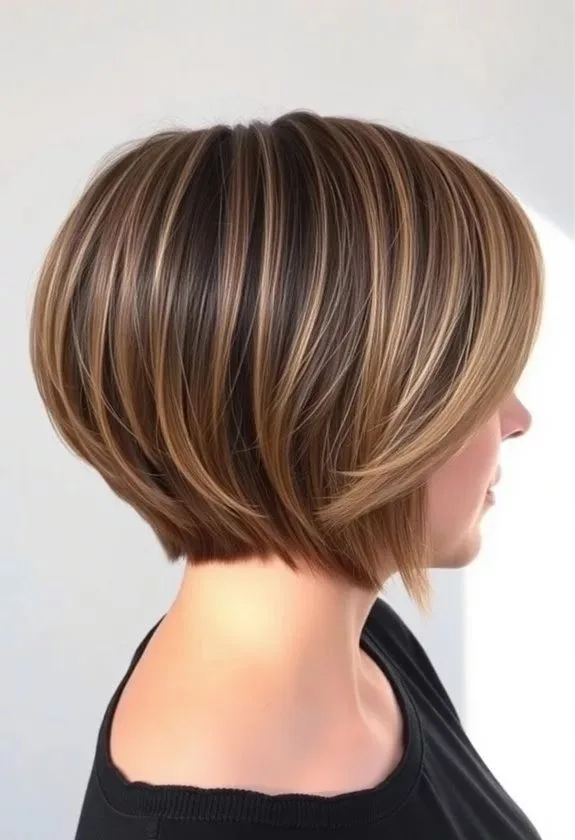
Before you start growing out your pixie cut, it helps to have a clear goal in mind. Are you aiming for a bob? Shoulder-length hair? Something even longer?
Knowing where you’re headed makes the whole process smoother—for both you and your stylist.
Your hair texture, face shape, and growth patterns all play a role, so take them into account when planning. For example, if you want a bob, let the back grow first and keep the sides neat. If you’re going for length, grow everything out more evenly.
Talk to your stylist about styles that work for each phase. Things like side-swept bangs or soft layers can keep your hair looking intentional, not in-between.
Having a plan keeps you from feeling stuck—and makes every stage look like a style choice, not just a waiting game.
Style Through Different Lengths
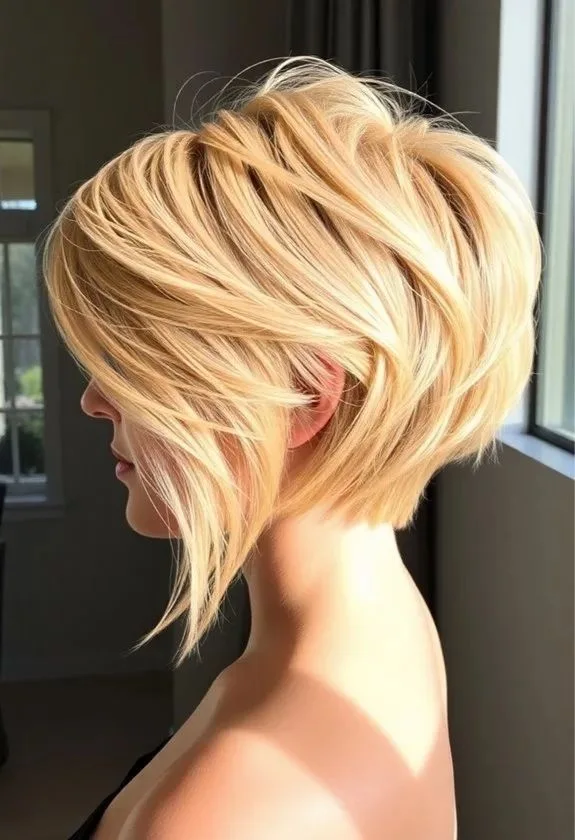
As your pixie grows out, styling becomes your best tool for staying polished through every phase.
In the early stages, a little pomade or texturizing spray can help control flyaways and keep shorter pieces looking styled.
When lengths get uneven, bobby pins come in handy—use them to twist or pin back sections that won’t quite stay put yet.
As your hair gets longer, try side-swept looks, soft curls, or tiny braids to blend layers. A mini flat iron or curling wand adds texture and helps shape awkward sections.
And if you want a bit more length for a night out, clip-in extensions can do the trick without any commitment.
Adjust your styling routine as your hair grows—what works at one stage may need a simple switch-up at the next.
Also Read: 49 Modern Long Pixie Hairstyles to Rock in 2025
Consider Hair Extensions
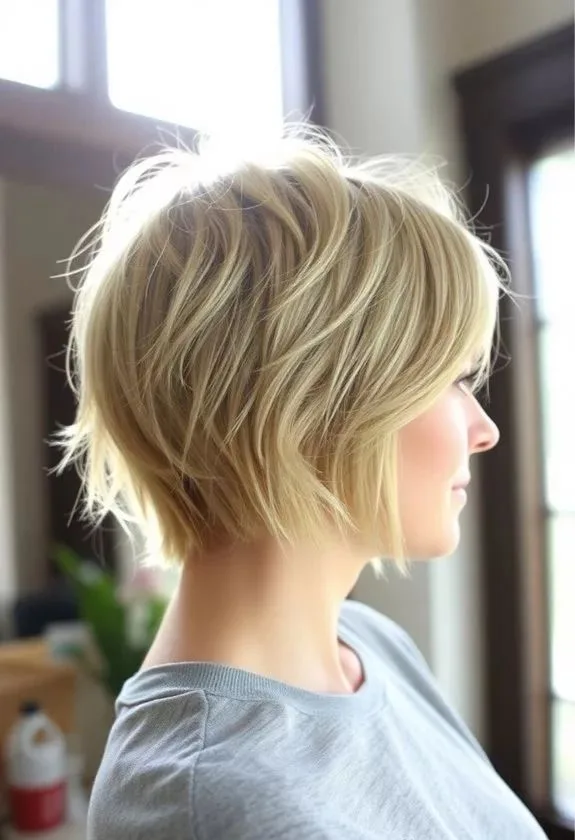
Hair extensions can really come in handy when you’re growing out a pixie cut.
Clip-ins are an easy, low-commitment way to add a bit of length and fullness—especially when your hair feels uneven or in-between styles.
Try starting with shoulder-length pieces that match your hair’s color and texture. Just a few around the back and sides can help even things out without feeling too heavy.
For the best blend, it’s worth having a stylist trim and shape them to fit your current cut.
And be sure to care for both your natural hair and the extensions—keeping everything healthy makes the grow-out phase a whole lot smoother.
Focus on Hair Health
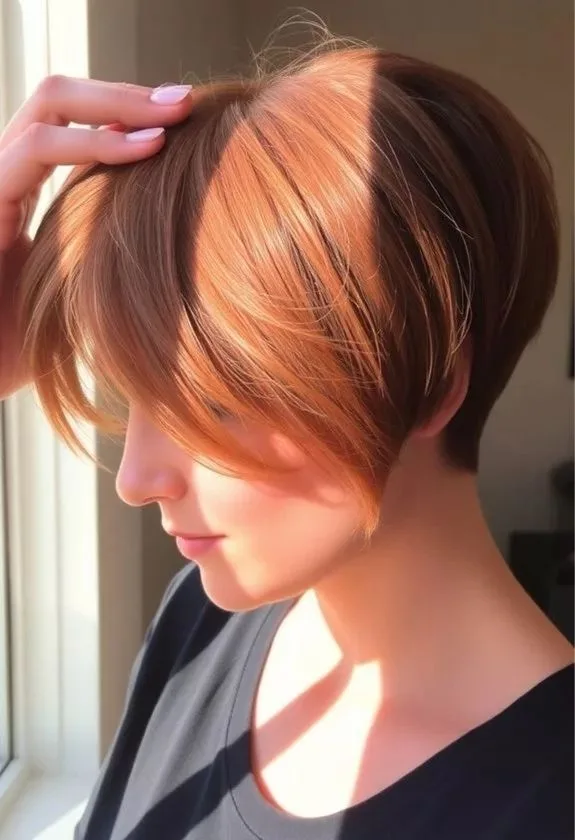
Taking care of your hair makes a big difference when growing out a pixie cut. The healthier it is, the easier the journey feels.
Start with the basics—eat well and include nutrients like protein, biotin, and vitamins A, C, and E to support steady growth from the inside out.
Stick to a gentle, sulfate-free shampoo and deep condition regularly to keep your hair soft and strong. Sleeping on a silk pillowcase helps cut down on breakage, too.
Try to go easy on heat tools, and always use a heat protectant when you do. Little things like that really add up.
Regular trims every 8–10 weeks help keep split ends from spreading, and a good leave-in or weekly mask can keep your strands feeling hydrated.
And when brushing, be gentle—especially if your hair’s wet. A wide-tooth comb or detangling brush is your best bet.
With just a bit of extra care, growing out your pixie gets a whole lot easier—and your hair will thank you for it.
Shape Your Growing Layers
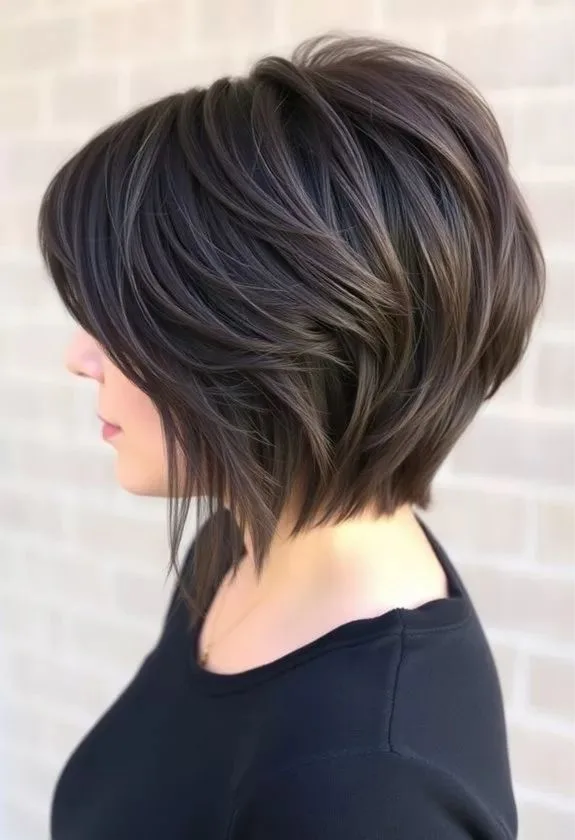
Managing layers during the pixie grow-out takes a little strategy.
Start with regular micro-trims every 8–10 weeks—just enough to clean up the neckline while letting the top grow.
Work with your stylist to blend shorter pieces underneath with longer layers on top. This keeps your shape balanced and avoids that mullet look.
Texturizing helps too. Light point-cutting can remove bulk without losing length, especially around the ears and neck.
As the sides grow, trim them at a soft angle toward the back to guide the shape.
Use lightweight creams to smooth longer pieces and texturizing paste for control—it helps everything blend as your layers grow out.
Conclusion
Growing out a pixie cut takes time, care, and a little creativity.
With regular trims, smart styling, and the right products, you can stay polished through every stage.
Stick with a good routine, work with your stylist, and be patient—your dream length is totally within reach.
